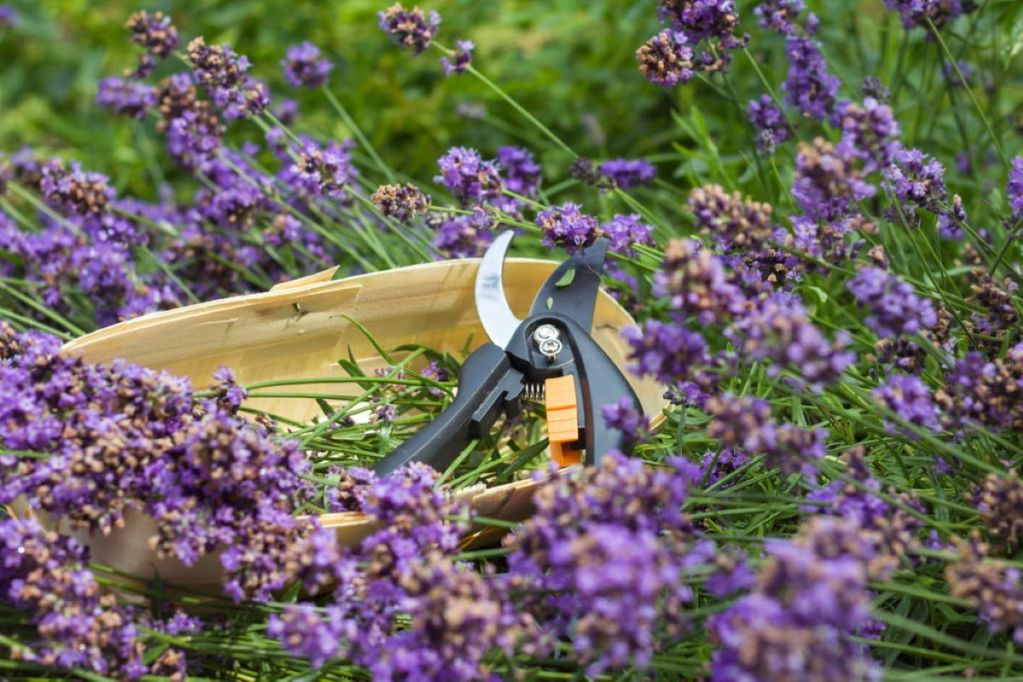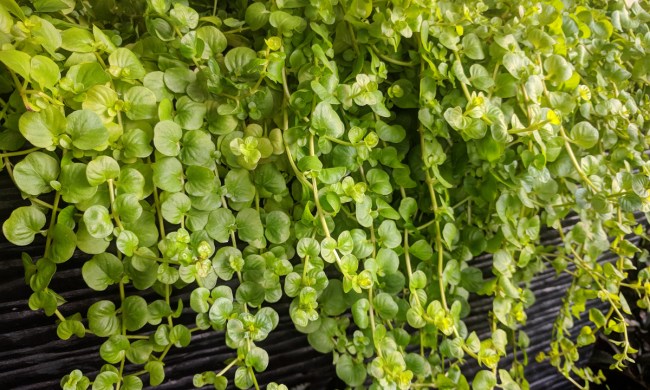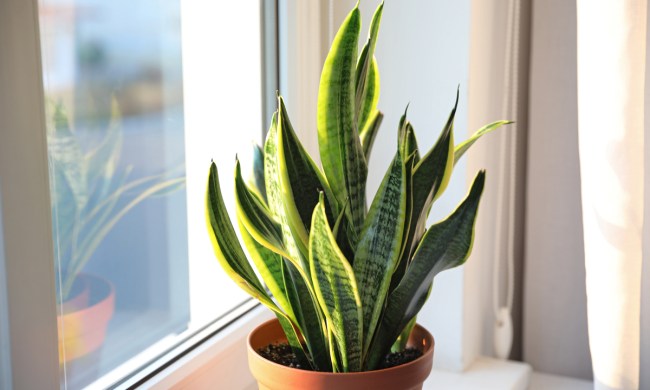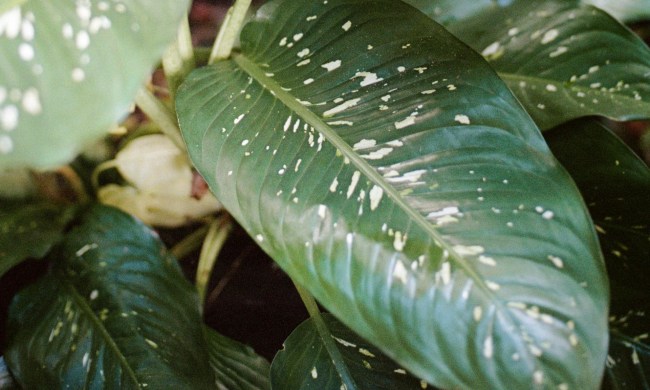Lavender is a beautiful flower and a useful herb. It’s great for flavoring beverages and baked goods, making scented lotions or potpourri, and it attracts pollinators! As part of an outdoor garden, lavender can grow quite large, but what if you don’t have room outdoors? Can you keep a lavender plant small by growing it in a container? Can you grow lavender indoors? We’ll answer these questions and more in this handy guide to growing and caring for a lavender plant indoors.
Can you grow lavender in a container?

Yes! Lavender can grow in a container, and it actually does fairly well. Potted lavender plants are perfect for patio gardens, as you can still get the benefits of growing lavender outdoors (such as attracting pollinators), without taking up as much room. When choosing a container for your lavender plant, there are two key details to pay attention to: size and drainage holes. Sizing is simple — make sure your lavender plant fits into the container with a bit of room to spare.
While putting a tiny lavender plant in a mug or teapot looks incredibly cute, these don’t have anywhere for excess water to drain. That can lead to root rot and other problems caused by overwatering. If you want to keep your lavender in a container without drainage holes, plant your lavender in a slightly smaller container that does have drainage holes, and then place the entire potted plant into the larger container.
The main difference between caring for a potted lavender plant and one in the ground is watering. Due to the smaller space, water will drain away from your lavender plant more quickly. Water your potted lavender plant more frequently, but avoid watering it if the soil is still wet.
Can you grow lavender indoors?

If lavender plants can grow in containers, can they grow indoors? Yes! Lavender plants can grow indoors, although it is slightly more difficult than growing them outdoors. In addition to paying more attention to watering your lavender plant, you’ll also need to keep an eye on the light and temperature around it.
Lavender needs plenty of sunlight, and it can be a challenge to ensure it gets enough sun when living indoors. Place it in your sunniest window, where it will be in full sun or bright, indirect light. If your windows don’t receive enough sun or your lavender plant is beginning to look a bit faded, try supplementing the natural light with a grow light. You can also move your indoor lavender plant outdoors during warm weather to increase the amount of light it gets.
Temperature and humidity are also important. While outdoor lavender plants are quite hardy, potted and indoor plants have less protection from the cold. Additionally, since conditions indoors change less frequently (unless you deliberately change them), something minor that might bother an outdoor plant occasionally can become a larger issue if your lavender plant is consistently exposed to it. For these reasons, keep your lavender plant away from drafts and air vents. Drafts blow cold air over your plant, and air vents (both air conditioning and heating) blow dry air.
Common pests and problems

Common houseplant pests sometimes bother indoor lavender plants. Aphids, spider mites, scale, and mealybugs can all target your lavender plant. They rarely do severe damage, as lavender is quite hardy. Luckily, they’re also relatively easy to control. A simple insecticidal soap or application of neem oil will keep them at bay. If you plan on harvesting your lavender to eat, be sure to use a pest control method that is safe and nontoxic for humans!
As previously mentioned, lavender can also suffer from a lack of light, watering problems, and drying out when grown indoors. Paying attention to your plant will help you catch these problems as they begin, so you can correct them more quickly. Look for changes in color and texture in your lavender, such as limp or droopy stems and dry or brittle leaves. These are indicators that something isn’t quite right.
Harvesting indoor lavender

Indoor lavender plants can be harvested just like outdoor lavender, with only one notable difference. When harvesting lavender, regardless of where it grows, use a sharp, clean blade or shears and select healthy stems in good condition. You should also avoid taking too much of the plant at once. This is the primary difference between harvesting from indoor and outdoor lavender plants. Since indoor plants are typically much smaller, you need to harvest less at a time to avoid putting too much stress on your plant. It can be easy to accidentally overharvest from smaller plants. In general, you shouldn’t take more than one-third of any plant when pruning, harvesting, or even propagating.
Now you don’t have to wonder, “Can you grow lavender indoors?” The answer is yes, and now that you know how caring for a potted lavender plant and an indoor lavender plant differ from growing one in your garden, you’re ready to start growing one today. Why stop at lavender? Consider growing an entire indoor herb garden!




